Welcome to the Shirt Placement Guide, your ultimate resource for mastering the art of positioning designs, logos, and embroidery on various shirt styles. This guide covers essential techniques, tools, and best practices to ensure your creations look professional and polished, whether you’re working with casual tees, dress shirts, or hoodies. Discover how to align designs perfectly, choose the right fabrics, and achieve flawless results every time.
1.1 Importance of Proper Shirt Placement
Proper shirt placement is essential for achieving a polished and professional appearance. Whether it’s a casual T-shirt, a formal dress shirt, or a cozy hoodie, the positioning of logos, embroidery, and designs significantly impacts the overall look. Misaligned or poorly placed elements can detract from the shirt’s aesthetic, while precise placement enhances visual appeal and ensures a cohesive design. Additionally, proper placement considers factors like fabric type, shirt style, and intended use, ensuring longevity and comfort. By mastering shirt placement, creators can elevate their designs, making them both functional and visually striking. This guide provides expert tips to help you achieve flawless results every time.
1.2 Overview of Shirt Placement Elements
This section provides a comprehensive overview of the key elements involved in shirt placement, ensuring a balanced and visually appealing design. From logos and embroidery to vinyl applications, understanding where and how to place each element is crucial. The guide covers various shirt styles, including casual tees, dress shirts, and hoodies, highlighting specific placement rules for each. Factors such as fabric type, design size, and alignment tools are also addressed, offering practical insights for both beginners and professionals. By mastering these elements, you’ll be able to create custom shirts that look professional and meet your creative vision. Proper placement enhances both aesthetics and functionality, making every shirt unique and polished.
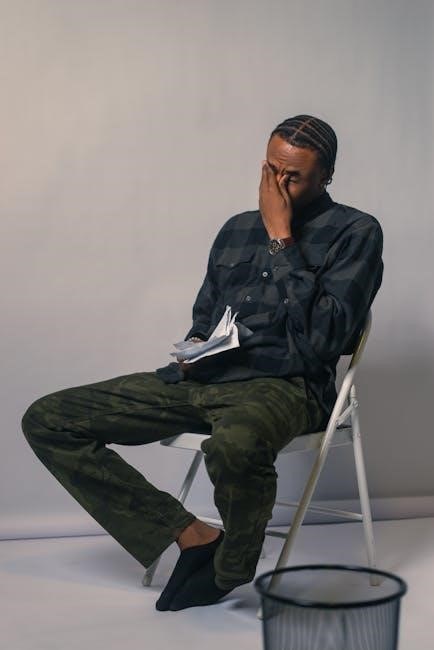
Types of Shirts and Their Placement Guidelines
Explore various shirt styles, from casual tees to dress shirts and hoodies, each with unique placement guidelines for logos, embroidery, and designs to enhance style and functionality.
2.1 Casual T-Shirts: Placement for Logos and Designs
Casual t-shirts are a popular canvas for logos and designs. For a classic look, place logos on the chest, centered and about 3-4 inches below the neckline. Designs can also be positioned on the back for a bold statement. Sleeves offer space for smaller graphics or text, aligning them vertically for a balanced appearance. Ensure measurements are precise using a t-shirt ruler guide to maintain symmetry. Vinyl and embroidery work well on cotton fabrics, while sublimation suits polyester blends. Consider the design’s size relative to the shirt and the wearer’s comfort. Proper alignment enhances both aesthetics and wearability.
2.2 Dress Shirts: Embroidery and Monogram Placement
Dress shirts offer a canvas for elegant embroidery and monogram placement. Traditional locations include the left chest, cuffs, and near the hem. Embroidery on pockets and plackets adds a subtle touch, while collars provide a refined space for smaller designs. Monograms are typically placed on the left chest or cuffs, aligned precisely for a polished look. Use a t-shirt ruler guide to ensure accurate centering and symmetry. Consider fabric type, as cotton and polyester blends respond differently to embroidery. Proper alignment and sizing are crucial to maintain a professional appearance. These placement guidelines help create a balanced, sophisticated design tailored to formal occasions.
2.3 Hoodies: Logo and Design Placement Best Practices
Hoodies offer a versatile canvas for logo and design placement, balancing style and functionality; The chest area is ideal for bold logos, while the back provides space for larger, eye-catching designs. Sleeves can feature vertical or wrapped designs for a modern look. The hood itself can display smaller logos or text, aligning with the neckline for a cohesive appearance. Use a t-shirt ruler guide to ensure precise centering and symmetry. Consider fabric type, as stretch materials may require adjusted placements. Crosshair techniques can enhance precision, especially for intricate designs. Layering designs with contrasting colors adds depth. Proper alignment and spacing are key to avoiding clutter and achieving a professional finish.
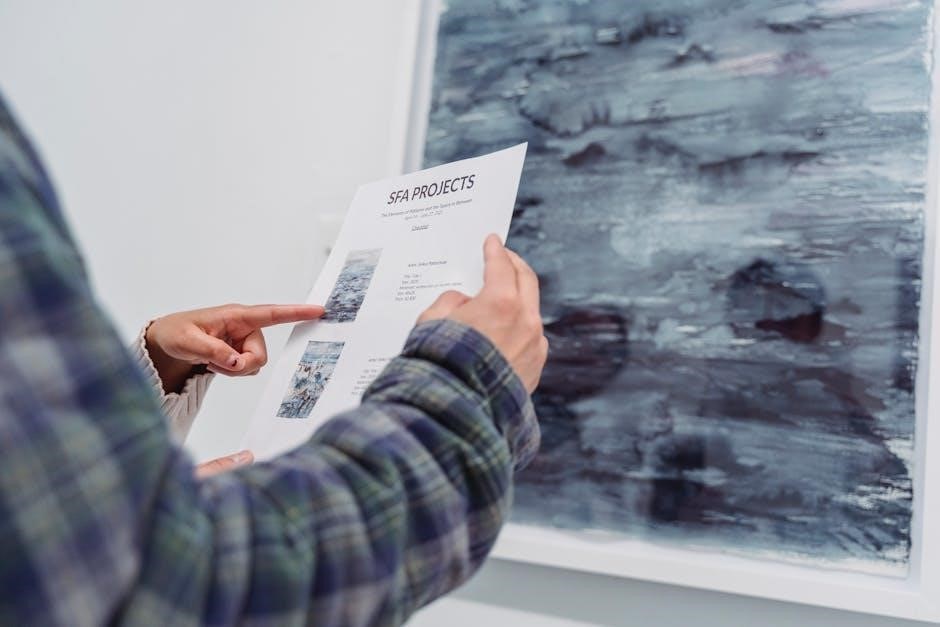
Design Elements and Their Placement
Design elements like logos, embroidery, and vinyl require strategic placement on shirts. Logos are often centered on the chest, while embroidery suits pockets or cuffs. Vinyl designs benefit from alignment tools for precise placement, ensuring professional results.
3.1 Logo Placement: Chest, Sleeves, and Back
Logo placement is critical for visual appeal. The chest area is a popular choice, typically centered 3-4 inches below the neckline. Sleeves offer a modern look, with logos placed vertically or wrapped around the arm. The back, especially the upper region, provides a bold statement. Alignment tools and size charts ensure accuracy. For casual shirts, smaller logos on sleeves are trendy, while formal shirts may feature subtle chest embroidery. Vinyl designs on the back require precise measurements to avoid distortion. Proper placement enhances brand visibility and aesthetic balance, making it essential for professional results.
3.2 Embroidery Placement: Pockets, Collars, and Cuffs
Embroidery placement on pockets, collars, and cuffs adds elegance and detail to shirts. Pockets are ideal for small designs, often centered 1-2 inches above the seam. Collars can feature subtle embroidery on the underside or at the tips for a polished look. Cuffs are perfect for monograms or logos, aligned vertically or horizontally. Proper alignment tools and size charts ensure precise placement. These areas enhance the shirt’s professionalism and balance, making embroidery placement a key element in achieving a refined, custom appearance.
3.3 Vinyl Placement: Alignment Tools and Measurements
Vinyl placement requires precision to ensure designs look sharp and professional. Using a T-shirt ruler guide or alignment tool is essential for centering logos and texts. Measure the chest area for standard placements, typically 8-10 inches wide. For sleeves, align designs vertically or wrap them slightly for a modern look. Tools like size charts help determine the best fit and alignment on different fabrics. Proper measurements prevent distortion and ensure the vinyl adheres smoothly. Always double-check placement before pressing to avoid errors. These steps guarantee a flawless finish, making vinyl placement a breeze for both beginners and experienced creators.

Tools and Measurements for Accurate Placement
Accurate shirt placement relies on the right tools and measurements. Use rulers, alignment guides, and size charts to ensure designs are centered and properly sized for different fabrics and styles.
4.1 T-Shirt Ruler Guide: Centering Designs
The T-Shirt Ruler Guide is an essential tool for centering designs accurately. Featuring measurements for both adult and youth sizes, it ensures symmetry and alignment, making the application of vinyl, embroidery, or screen printing seamless. The ruler’s dual-sided design allows for precise adjustments, catering to various shirt styles and fabrics. By using this guide, you can achieve professional-looking results without guesswork, ensuring your designs are perfectly centered every time. This tool is particularly useful for creating consistent placements across multiple shirts, making it a must-have for both beginners and experienced designers.
4.2 Size Charts: Ensuring Proper Fit and Alignment
Size charts are crucial for ensuring proper fit and alignment when placing designs on shirts. They provide precise measurements for chest width, sleeve length, and overall dimensions, helping you position logos and embroidery accurately. By referencing a size chart, you can determine the ideal placement for designs based on the shirt’s intended fit. This tool is especially useful for heat transfers, screen printing, and embroidery, as it ensures consistency across different sizes and styles. Dual-sided rulers and alignment guides complement size charts, offering a comprehensive approach to achieving professional-looking results. Using size charts ensures your designs are not only visually appealing but also perfectly proportioned for any shirt style or fabric type;
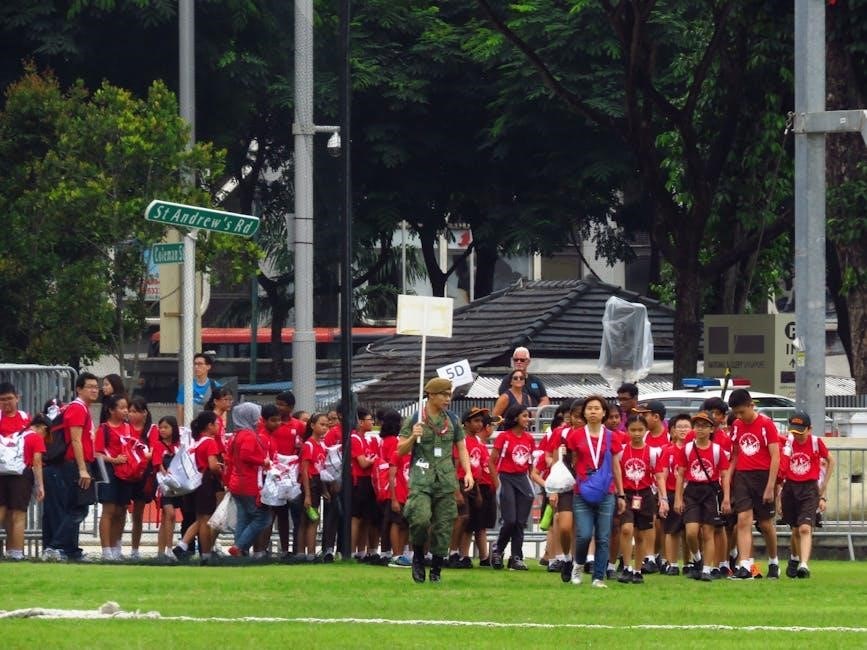
Fabric Type and Placement Considerations
Fabric type significantly impacts design placement. Cotton and polyester shirts offer durability and breathability, making them ideal for chest or sleeve logos. Stretch fabrics require designs that flex without cracking, ensuring longevity and aesthetic appeal.
5.1 Cotton and Polyester: Placement for Different Fabrics
Cotton shirts are breathable and soft, making them ideal for chest or sleeve logos, while polyester offers durability and moisture-wicking properties, perfect for sportswear. Cotton is great for casual designs, as it absorbs ink well, ensuring vibrant prints. Polyester, often used for bold graphics, holds colors brightly and resists fading. For blended fabrics, combine the benefits of both materials, offering flexibility and comfort. Understanding fabric types helps in selecting the best placement for logos and designs, ensuring longevity and visual appeal. Proper alignment tools and measurements are crucial for precise placement on these fabrics.
5.2 Stretch Fabrics: Adjusting Placement for Flexibility
Stretch fabrics, commonly used in activewear and fitted clothing, require careful placement to accommodate movement without distorting designs. When working with stretch materials, allow extra space for designs to ensure they remain legible and visually appealing when stretched. Opt for placements like the upper back or sides, which experience less distortion. Use a ruler guide with a grid to maintain alignment and symmetry. Heat transfer materials designed for stretch fabrics are ideal, as they move with the garment. Avoid over-crowding designs, as this can lead to a cluttered appearance. Proper placement ensures functionality and aesthetics, making stretch fabrics a versatile choice for modern apparel designs.
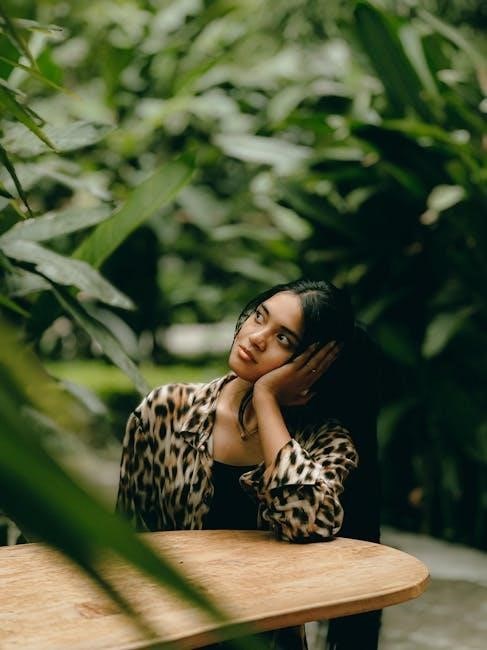
Advanced Placement Techniques
Explore advanced techniques like crosshair placement for precision and layering designs for visual impact. These methods elevate your shirt designs to a professional level easily and effectively.
6.1 Crosshair Placement for Precision Designs
Crosshair placement is a precision technique used to ensure designs are perfectly centered and aligned on shirts. This method involves using a ruler or alignment tool with crosshair markings to accurately position logos or text. Professionals often use this approach for intricate designs requiring exact placement. The crosshair system helps eliminate guesswork, ensuring symmetry and balance. For best results, align the center mark of the crosshair with the shirt’s midpoint, then adjust the design accordingly. This technique is particularly effective for chest logos, sleeve prints, and back designs. Combine it with measuring tools for flawless execution and a polished look every time.
6.2 Layering Designs: Overlapping and Contrast
Layering designs involves strategically overlapping elements to create visually appealing and complex compositions on shirts. This technique enhances the overall aesthetic by combining logos, patterns, and text in a harmonious way. When layering, ensure contrasting colors and sizes to maintain clarity and balance. Proper alignment tools, such as crosshair guides, help achieve precise placement. Consider the fabric type, as stretchy materials may require adjusted positioning. Experiment with mockups to test layering effects before final placement. Remember, balance is key—avoid overcrowding to maintain a professional look. This method is ideal for bold statements or intricate designs, making your shirt stand out with depth and creativity.

Monogram and Text Placement
Monograms are typically placed on the left chest or cuffs, while text alignment focuses on centering or justifying for a polished look. Proper placement ensures balance and readability, enhancing the shirt’s aesthetic appeal while maintaining professional results.
7.1 Monogram Placement: Left Chest and Cuffs
Monograms are traditionally placed on the left chest, approximately 6-8 inches below the neckline, and on cuffs for a subtle yet elegant look. This placement ensures visibility without overpowering the design. For cuffs, monograms are centered horizontally, aligning with the shirt’s placket. On formal shirts, this adds a touch of sophistication, while on casual wear, it offers a discreet personalization. Proper alignment tools, like rulers or templates, are essential for precise placement, guaranteeing a professional finish. This classic positioning maintains balance and enhances the overall aesthetic of the garment.
7.2 Text Alignment: Centering and Justifying
Proper text alignment is crucial for a polished look. Centering text ensures symmetry, making it visually appealing, especially for logos or slogans. Justifying text can create a clean, organized appearance, particularly when aligned to the left or right. Tools like rulers or laser guides help achieve precise alignment. For sleeves, text is often centered vertically or justified to fit the fabric naturally. When placing text near collars or cuffs, measure from the edge to maintain consistency; Use alignment tools to ensure designs are straight and evenly spaced. This attention to detail enhances professionalism and readability, making your shirt designs stand out. Proper alignment tools are essential for achieving flawless results.

Placket and Pocket Placement
Placket and pocket placement are crucial for functionality and style. Proper alignment ensures buttons and embroidery are visually appealing, while pockets are positioned for practical access.
8.1 Placket Design: Button Placement and Alignment
When designing a placket, precise button placement and alignment are essential for both functionality and aesthetics. The placket serves as the opening of the shirt, typically on the front, and is often enhanced with buttons. The spacing between buttons should be uniform, ensuring a clean and professional look. Proper alignment involves centering the buttons vertically and horizontally, especially on button-down shirts. A well-crafted placket not only enhances the shirt’s durability but also contributes to its overall visual appeal. Tools like alignment guides or rulers are recommended to achieve accurate placement and maintain symmetry.
8.2 Pocket Placement: Embroidery and Logo Integration
Pocket placement is a critical element in shirt design, particularly when integrating embroidery or logos. Positioning embroidery on pockets requires careful consideration of size, alignment, and balance. For optimal visibility, designs should be centered and placed approximately 1-2 inches above the pocket’s edge. This ensures the logo is prominent without overwhelming the shirt’s overall design. When combining multiple pockets, maintain symmetry and consistency in embroidery placement. Tools like rulers or alignment guides can help achieve precise positioning. Proper integration enhances both functionality and aesthetics, making the shirt visually appealing while preserving its practicality. Attention to detail ensures a polished, professional finish.

Sleeve and Hem Placement
Sleeve and hem placement are vital for balanced shirt design. Focus on aligning designs vertically or horizontally for a cohesive look. Use tools like rulers or alignment guides to ensure precision and maintain proportions for a professional finish.
9.1 Sleeve Designs: Wraps and Vertical Alignment
Sleeve designs require careful consideration to ensure visual balance. Wraps, which extend from the front to the back, create a dynamic look but demand precise alignment; Vertical alignment is key; designs should be centered and evenly spaced along the sleeve. Use a ruler or alignment tool to measure from the shoulder seam to the cuff. For wraps, ensure the design flows smoothly around the sleeve without distortion. Vertical alignment enhances readability and aesthetics, making the design more professional. Proper placement prevents the design from appearing crooked or misaligned, ensuring a polished finish. Always test designs on different sleeve lengths and fabrics to maintain consistency and appeal.
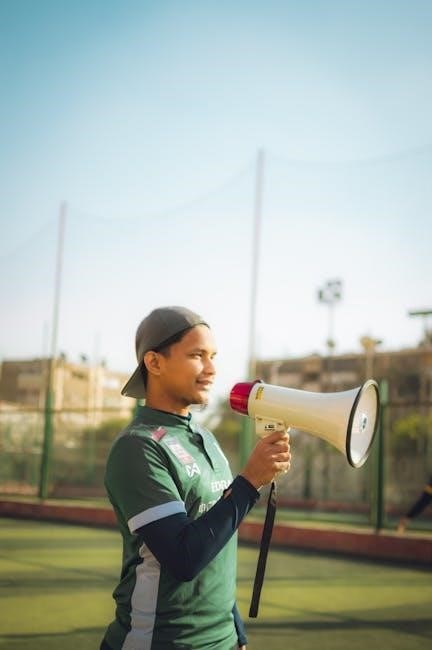
9.2 Hem Placement: Bottom Designs and Logos
Hem placement is a subtle yet impactful element in shirt design. Positioning logos or designs at the bottom hem can add a sleek, modern touch. Ensure designs are centered and evenly spaced, avoiding overcrowding. For logos, place them 1-2 inches above the hem, aligned with the shirt’s center. Bottom designs should complement the overall aesthetic without overwhelming other elements. Consider fabric type; stretchy materials may require adjusted measurements. Use alignment tools to maintain precision. Hem placement offers a unique way to enhance visual appeal while keeping the design understated. Proper execution ensures a balanced and professional look, making it ideal for both casual and formal shirts.
Mastering shirt placement enhances both aesthetic and functionality. By following guidelines for logos, embroidery, and fabric types, you ensure professional results. Happy designing!
10.1 Summary of Shirt Placement Best Practices
To achieve professional results, focus on precise alignment, fabric compatibility, and design balance. Use tools like rulers and crosshair guides for accuracy. For casual shirts, center logos on the chest, while dress shirts benefit from embroidery on pockets or cuffs. Hoodies excel with bold designs on the back or sleeves. Ensure measurements align with size charts for a perfect fit. Consider fabric type—cotton, polyester, or stretch—to adjust placement accordingly. Layering designs and contrasting colors enhance visual appeal. Always plan layouts to complement the shirt’s style and purpose for a polished finish.
10.2 Final Tips for Achieving Professional Results
For professional shirt placement, prioritize precision and consistency. Use tools like rulers and crosshair guides to ensure accurate alignment. Always consider fabric type and design purpose to tailor placement effectively. Balance logo and embroidery sizes with the shirt’s dimensions for a polished look. Test designs on actual garments before final production to confirm fit and aesthetics. Maintain simplicity in complex designs to avoid overwhelming the viewer. Pay attention to detail, as small misalignments can detract from the overall appeal. By combining these strategies, you’ll consistently achieve high-quality, professional-looking results that elevate your designs and satisfy your audience.